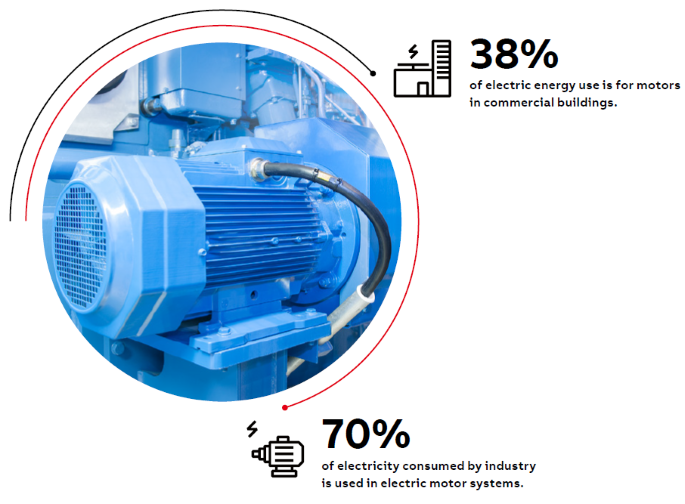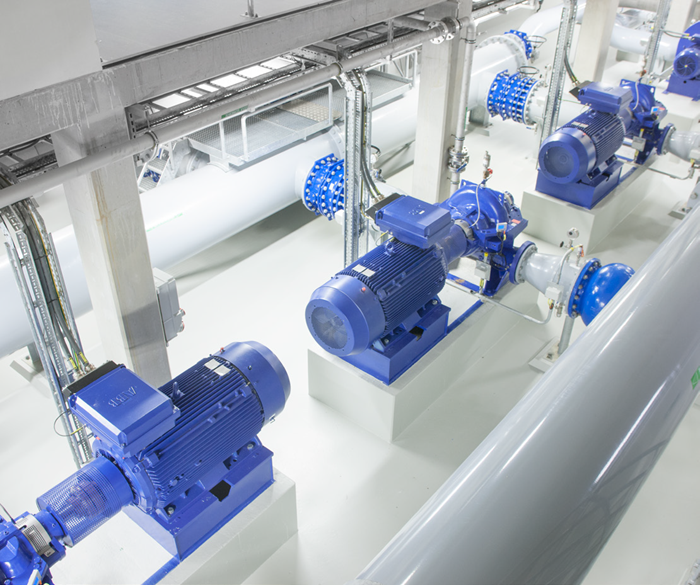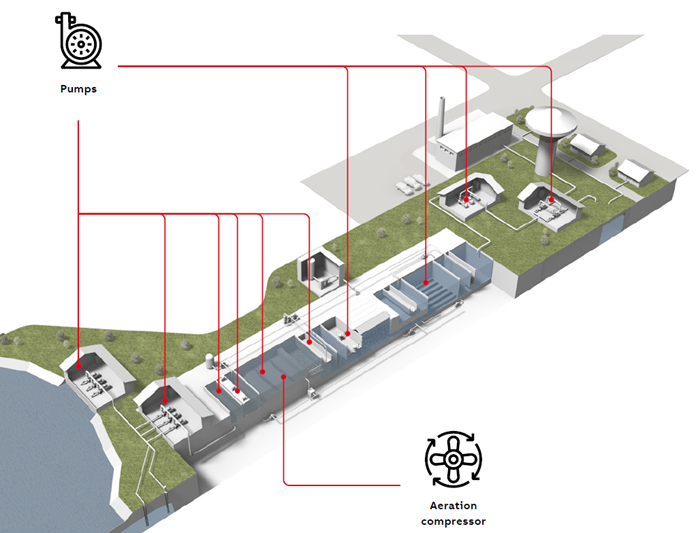By 2050, the world’s population is projected to reach 9.7 billion, up from 7.7 billion in 2019.1 Over the same period, the global economy is anticipated to more than double.2 Urbanization, automation, and rising living standards will increase global energy demand.
Over half of the global population currently resides in cities and towns. The United Nations estimates that by 2050, the world’s urban population will increase to approximately 68 %.3
If current practices continue, this scale of expansion will accelerate climate change and degrade the air and water quality essential to all living organisms. To protect the environment without impeding economic growth, the commitment to reducing energy and natural resource consumption must be intensified.
In line with global trends, demand for electric motion, drive systems powered by electric motors, is projected to rise substantially. According to the IEA, industrial activity is responsible for 37 % of global energy consumption and 24 % of CO2 emissions worldwide. Buildings represent approximately 30 % of energy consumption and 28 % of CO2 emissions.4,5
A significant portion of this activity is associated with electric motors. It is estimated that electric motor systems account for around 70 % of industrial electricity consumption.6 In commercial buildings, 38 % of electricity is used by motors.7

Image Credit: ABB Motors and Drives North America
Electric motors have been in use for 150 years and have steadily improved over time. However, over the past decade, they have experienced exceptionally rapid technological development. The most recent wave of innovation has paved the way for significant reductions in the carbon footprint of industrial and commercial electric motors in the immediate future.
A growing range of highly energy-efficient electric motors (rated IE3 or higher) and the variable-speed drives (also known as “frequency converters” or “AC drives”) used to operate them are currently available on the market.
These technologies are instrumental in helping many signatory countries of the Paris Agreement achieve their carbon reduction objectives within the next decade. Their potential impact is substantial. However, to realize the full advantages of high-efficiency motors and drives, all stakeholders have crucial roles:
- Public policymakers and government regulators must incentivize their rapid implementation.
- Businesses, cities, and countries must recognize both the economic and environmental benefits and be willing to make the investment.
- Manufacturers such as ABB must provide the technologies needed to drive innovation and increase energy efficiency.
- Investors must reallocate capital toward corporations better equipped to address climate risk.
- Public education programs are necessary to raise awareness and promote the value of these upgrades.
Such steps have already been implemented to support the adoption of electric vehicles and renewable energy sources. It is past time to do the same for sustainable technology capable of delivering even greater environmental and economic benefits.

Image Credit: ABB Motors and Drives North America
The Critical Role of Electric Motors
Contemporary, high-efficiency motors, coupled with variable-speed drives, are designed to be versatile and dependable. Most importantly, they are exceptionally efficient, providing substantial reductions in energy consumption compared to older systems. Their value in the development of a sustainable society cannot be overstated.
Given that 45 % of global electricity is used to power electric motors in buildings and industrial applications, any investment in upgrading the equipment used in these systems will provide substantial benefits in terms of efficiency and sustainability. Although often overlooked, electric motors are ubiquitous, forming an essential component of global industry and daily life.

Motor-driven applications can be found at every stage of water treatment. Image Credit: ABB Motors and Drives North America
Small motors are found in compressors for air conditioners, refrigerators, car windows, computer printers, cooling fans in electronic appliances, and various other everyday devices. Medium-sized motors are used in heating, ventilation, air conditioning (HVAC) systems, elevators, rapid transit vehicles, and electric or hybrid vehicles.
These motors are widely used in industry, including in pumps, conveyors, fans, and various types of mechanical motion systems. The largest electric motors are employed in railway engines, cable cars, ship propulsion systems, and heavy equipment used in mining and paper mills.
Although large motors, drawing more than 375 kW of power, represent just 0.03 % of all operational motors, they account for approximately 23 % of all electricity consumed by motors worldwide, equating to 10.4 % of total electric power consumption. In contrast, the smallest motors, those with an output below 0.75 kW, account for only about 9 % of electric motor power consumption.9
Most electricity used by motors is consumed by mid-sized motors. Many of these motors are larger than necessary for their applications and frequently operate at maximum speed, even when additional power is not required.
Approximately 75 % of the industrial motors in operation are used in pumps, fans, and compressors, a category of machinery that shows significant potential for major efficiency improvement.10 The potential reductions in energy consumption and carbon emissions are substantial, to say the least.

Motor-driven applications are found throughout buildings to provide heat, ventilation and air conditioning. Image Credit: ABB Motors and Drives North America

This information has been sourced, reviewed and adapted from materials provided by ABB Motors and Drives North America.
For more information on this source, please visit ABB Motors and Drives North America.